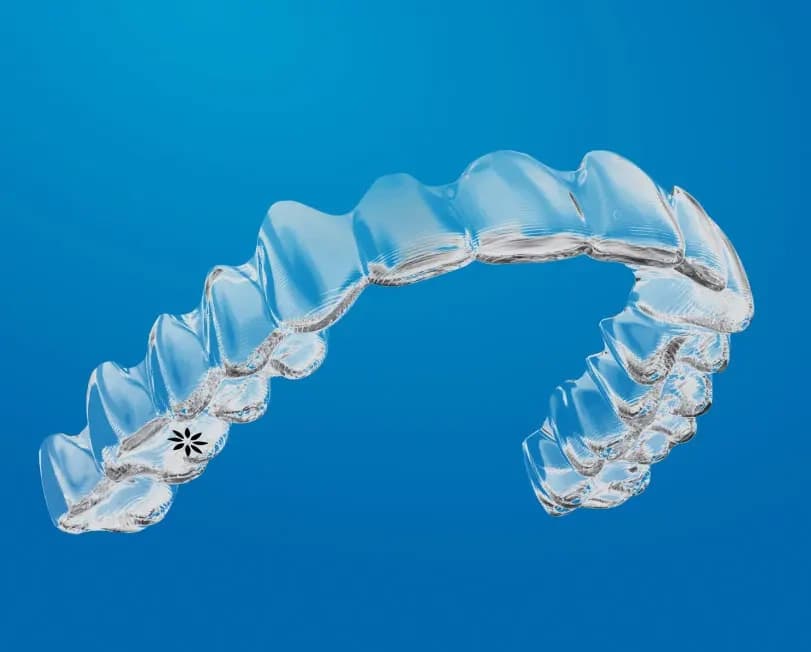What to Expect During Your Invisalign Journey: A Comprehensive Introduction
Wiki Article
Invisalign vs. Standard Braces: Which Option Is Right for You?
When considering orthodontic treatment, the option between Invisalign and standard braces offers numerous essential aspects that warrant cautious assessment. Invisalign uses a very discreet alternative with detachable aligners, while conventional braces offer an extra visible yet reliable option for extreme imbalance. Each alternative incorporates unique advantages and disadvantages associated with aesthetics, convenience, treatment period, and cost. Understanding these nuances is essential for making a notified decision that lines up with your individual choices and way of living. The inquiry remains: which alternative will ideal fulfill your orthodontic needs and assumptions?Summary of Treatment Choices

In contrast, conventional dental braces include steel brackets and cords that are bonded to the teeth. This approach applies constant stress gradually to achieve placement. While reliable for complex orthodontic issues, typical dental braces call for regular brows through for modifications and can posture challenges in maintaining oral hygiene due to the problem of cleaning up around braces and wires.
Both alternatives have their values, and the choice commonly depends upon certain dental problems, way of life preferences, and person compliance. Eventually, consulting an orthodontic professional is vital for figuring out the most suitable treatment plan customized to individual needs. Understanding the nuances of each option can considerably influence the total success of orthodontic therapy.
Aesthetic Considerations
A considerable factor influencing the selection between Invisalign and typical dental braces is the aesthetic allure each treatment supplies. Invisalign aligners are crafted from clear plastic, making them practically undetectable when worn.In contrast, typical dental braces contain steel brackets and cords, which can be a lot more visible. While advancements in orthodontic modern technology have led to the advancement of smaller brackets and tinted elastics, traditional braces still maintain an even more obvious profile. For some individuals, the visibility of braces may prevent them from seeking required treatment.
Eventually, the choice between Invisalign and conventional dental braces might pivot on personal choices concerning looks. Patients who focus on discretion frequently favor Invisalign, while those who are much less worried about presence may choose traditional dental braces. Recognizing the aesthetic ramifications of each alternative is critical for making an informed choice that straightens with one's lifestyle and preferences.
Convenience and Convenience

In terms of convenience, Invisalign aligners are removable, enabling people to enjoy their preferred foods without restriction and maintain optimum dental hygiene. Cleaning and flossing are streamlined, as the aligners can be taken out during these routines, whereas typical dental braces need careful maneuvering around wires and braces.
In comparison, traditional braces require normal changes, making them less practical for those with busy routines. Overall, the convenience and ease of Invisalign make it an enticing selection for numerous people seeking orthodontic therapy.
Treatment Duration and Effectiveness
While both Invisalign and conventional visit here dental braces work in remedying oral misalignments, the duration of treatment can vary significantly between both alternatives. Commonly, Invisalign treatment can take anywhere from 12 to 18 months, depending on the complexity of the instance. The clear aligners work by slowly changing teeth right into their wanted positions, and routine follow-ups with an orthodontist assistance make certain progress stays on course.
On the other hand, traditional braces typically call for a longer dedication, generally ranging from 18 months to 3 years. This is due to their fixed nature and making use of cables and braces, which can be a lot more reliable for intricate instances and extreme misalignments (Invisalign). The treatment effectiveness of traditional braces is well-documented, as they permit precise adjustments and greater control over tooth movement
Ultimately, the choice between Invisalign and traditional dental braces might rest on both the expected therapy duration and the certain oral issues available. Consulting with an orthodontist is important, as they can supply customized referrals based on individual needs, ensuring the chosen technique lines up with preferred durations and results.
Cost Contrast and Insurance Policy Alternatives
Price plays a significant role in the decision-making procedure for individuals considering orthodontic therapy, whether going with Invisalign or standard braces. Generally, the expense of Invisalign ranges from $3,000 to $8,000, while traditional dental braces usually cost in between $2,000 reference and $6,000. Aspects influencing these prices include the intricacy of the situation, the period of treatment, and geographical location.Numerous oral insurance coverage strategies provide partial protection for orthodontic therapies, but the specifics can vary commonly. Generally, conventional dental braces might be more often covered by insurance policy plans contrasted to Invisalign, which some insurance providers classify as an aesthetic treatment.
Additionally, several orthodontic methods use versatile layaway plan, making both treatment choices a lot more accessible. Patients ought to ask about possible funding alternatives and discounts for upfront payments. Assessing the overall expense, consisting of insurance advantages and layaway plan, is vital for making a notified choice that lines up with both visual preferences and budget plan considerations.

Final Thought
In recap, the option in between Invisalign and conventional braces depends upon several variables, consisting of aesthetic preferences, comfort, therapy duration, and price. Invisalign uses a very discreet, detachable alternative that facilitates dental health and nutritional versatility, while standard braces may be better for complex oral issues and frequently come with a reduced price factor. Eventually, examination with an orthodontist is crucial to examine private situations and determine one of the most suitable treatment option for attaining ideal dental placement.When thinking about orthodontic treatment, the selection in between Invisalign and typical braces presents numerous crucial elements that merit cautious analysis.Contrasting Invisalign and standard braces discloses unique therapy choices for orthodontic correction.While both Invisalign and typical braces are effective in dealing with dental imbalances, the duration of therapy can vary dramatically between the 2 choices.Cost plays a considerable role in the decision-making process for people considering orthodontic therapy, whether opting for Invisalign or standard dental braces.In summary, the selection between Invisalign and standard braces hinges on numerous factors, including visual preferences, convenience, treatment duration, and price.
Report this wiki page